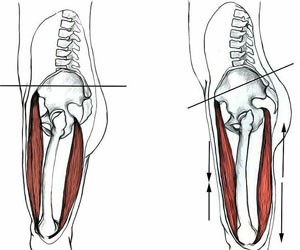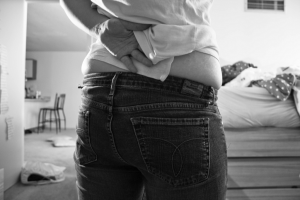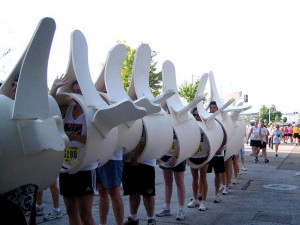Pelvic Tilt, Neck Pain and Low Back Pain Symptoms
Balance is the key of life the Chinese called it Yin and Yang. The human body is always seeking homeostasis and when out of balance disease and pain will consume you. It is only until balance is restored the body can heal properly. Human structure needs to be balanced from all 3 planes. In static posture and also in movement. Obviously we are asymmetrical beings and perfect alignment will never exist, but we must strive to be as close as possible or problems will exist later on down the road as we age. Also spine is a gravity depending structure. When sacrum and pelvis are off the rest of the spine will be off. Fix the foundation and the rest of the symptoms will disappear.
In the picture above we are looking at the balance of the pelvis from the front and back specifically the relationship between the quads and hams. In the first picture we have a neutral pelvis where the quads and hams are well balanced. In the second picture the pelvis is imbalanced due to the shortening of the quads which led to the lengthening of the hamstring. In technical terms the quads are concentrically loaded and the hams are eccentrically loaded causing an anterior pelvic tilt. Now that the pelvis is imbalanced symptoms of tight hamstring, lower back pain, upper back pain, tight traps, neck pain, headaches etc… will emerge. Until we balance the pelvis symptoms will continually plague the individual.
Our spine has three curves in it: One in the low back called the lumbar curve; one in the upper to mid-back called the thoracic curve; and a curve in our neck called the cervical curve. These curves influence one another. If something is off balance in one, the other two will also be out of balance.Since the spine rests on the pelvis, the curves of the spine are also influenced by the position of the pelvis.
Key to skeletal balance, a sense of orientation and muscular coordination, the balanced pelvis forms a rim-like base for the spinal vertebrae, rib cage, shoulder girdle and head.
Like the sprout growing up to form leaves and down to become roots; pelvic core integrity expresses itself in two directions simultaneously. The pelvic basin is responsible for not only being the base of support for the upper body but for transferring weight through the femur heads down through the knees, ankles and feet. How weight transfers through each leg and foot is dependent upon the positioning of the pelvic basin. Only when the pelvis is gravitationally centred can the feet receive and distribute weight evenly.
Pelvic instability shows itself as pelvic tilts, forward flexion, twists, dips or torques. Symptoms associated with instability include mid and low back pain, hip socket tension, leg length discrepancies, knee and ankle problems, TMJ and jaw pain, difficulty in breathing, groin pain, shoulder pain, difficulty in standing and walking, an inability to stand on both feet and excessive muscle tension throughout the body. Even headaches and dizziness may be traced to pelvic instability.
These diverse and complex symptoms reflect the innate involvement of the pelvis with three distinct bio-rhythms. Not only does the pelvic keystone provide the foundation for muscular-skeletal support but it cradles the meningeal-cranial-sacral system (the dynamic fluid relationship between sacrum and cranium) and provides the hard drive for the proprioceptive nervous system (our energetic sense of orientation).



